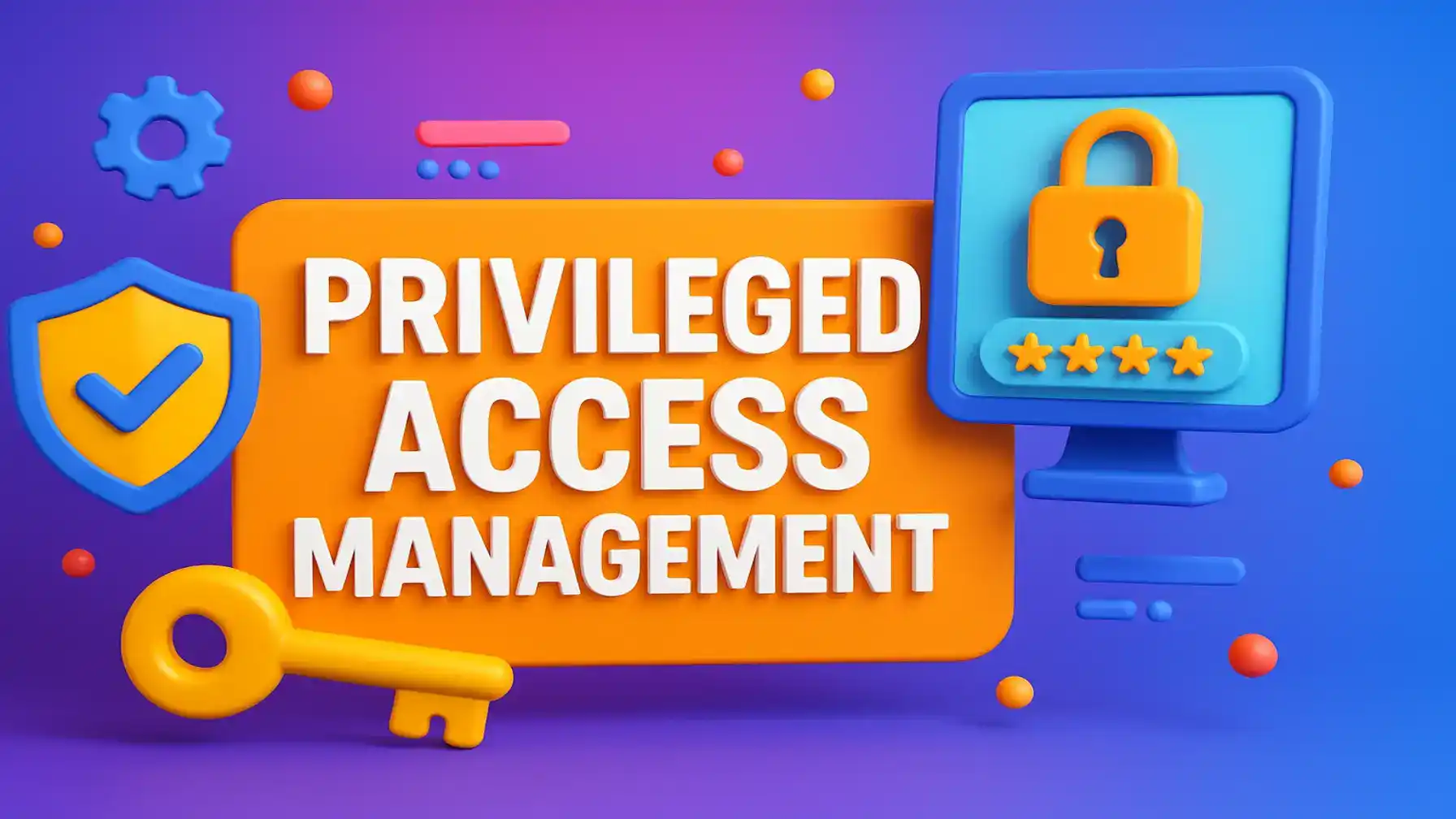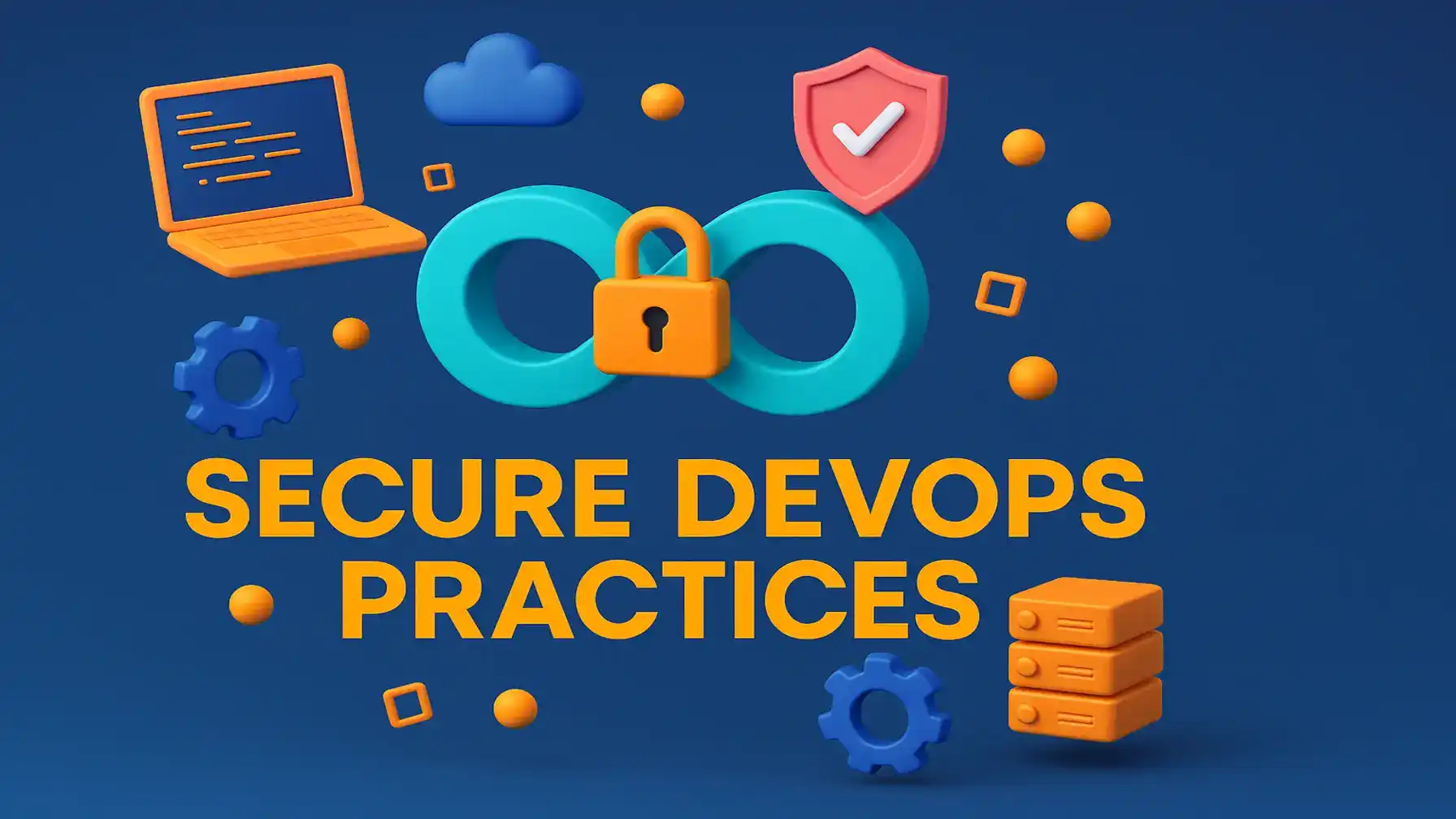In today’s fast-paced technological landscape, open source software has become a major force. It is reshaping industries, driving innovation, and encouraging community-driven development. Its model allows free access, modification, and distribution of source code. This approach has enabled businesses, governments, and educational institutions to use powerful software solutions. They can now do so without the financial burden of proprietary licenses. Open source software is not just about being free. It stands as a symbol of collaboration, transparency, and inclusivity. It empowers both users and developers. But what makes open source software so appealing? Why is it becoming a trendsetter across various sectors?
From the Linux operating system to popular platforms like WordPress, open source software is everywhere. Whether you manage a website, deploy cloud solutions, or use a smartphone, you likely benefit from this model. This guide explores the many facets of open source software. It delves into its advantages, challenges, and future prospects. We provide a comprehensive understanding of why it is more relevant today than ever before.
What is Open Source Software?
Open source software (OSS) is software that is distributed with its source code, allowing anyone to view, modify, and enhance it. This is in contrast to proprietary software, which restricts access to the source code and limits modifications. The OSS model promotes a decentralized and transparent method of software development. In an open source environment, developers from around the world can collaborate on improving the software, adding new features, fixing bugs, and enhancing security.
Also Read: Boost PC with AMD Chipset Drivers
One of the greatest strengths of open source software is its openness. The code is not owned by any one company or individual; instead, it is part of a collective community that is constantly evolving and improving. This collaborative nature is what has propelled open source into becoming a dominant force in modern computing. Whether you’re running a business, managing servers, or building personal projects, chances are there’s an open source solution available.
How Open Source Software Differs from Proprietary Software?
In proprietary software, the source code is closely guarded, and users must pay for licenses that allow them to use the software within the confines of the license agreement. Proprietary software also typically restricts modification and redistribution of the software, locking users into the vendor’s system and product updates. Open source software, on the other hand, provides freedom and flexibility, allowing users to customize, share, and distribute the software in whatever way they see fit. This freedom reduces reliance on a specific vendor, known as “vendor lock-in,” which is common with proprietary solutions.
While proprietary software often comes with more robust customer support and polished user interfaces, open source software offers unmatched flexibility, lower costs, and the ability to innovate without waiting for the next vendor release. Open platforms like Linux, Apache, and Kubernetes have proven that OSS can compete on a large scale, even surpassing proprietary competitors in areas like server management, cloud orchestration, and container deployment.
Why is Open Source Software gaining popularity?
The appeal of Freedom and Flexibility
The surge in the popularity of open source software can be linked to several factors, but perhaps the most compelling is the freedom it offers. Users are no longer at the mercy of proprietary vendors. With open source, they can control their software environment, making tweaks and adjustments to fit their specific needs. This is especially beneficial for industries that require specialized software that may not be readily available in a one-size-fits-all proprietary package.
The Global Community behind Open Source
Another major factor driving the growth of OSS is the community. Open source projects are powered by global collaboration. Developers from different parts of the world, often with varying skill levels and expertise, contribute to making the software better. This collective approach ensures that issues such as bugs and security flaws are identified and resolved faster than in a proprietary environment, where updates and patches rely on a limited team of in-house developers.
Moreover, the fact that many successful businesses and governments support open source initiatives has also helped bolster its popularity. Companies like Google, Microsoft, and Facebook contribute to or maintain open source projects, while governments in countries like Brazil, France, and the United Kingdom have embraced open source solutions for their public services. This institutional support has further legitimized OSS as a reliable and scalable solution for various applications.
Key Benefits of Open Source Software:
Cost-Effective Solutions for Businesses
Perhaps the most obvious advantage of open source software is cost savings. Proprietary software often comes with hefty licensing fees, renewal costs, and additional charges for premium features. In contrast, open source software is usually free to use, making it an attractive option for startups and businesses looking to reduce operational expenses. While companies may need to invest in developers to customize the software or provide support, the overall cost is significantly lower compared to proprietary alternatives.
For example, the use of Linux as a server operating system has become the default choice for many businesses precisely because it is free and highly scalable. Companies like Amazon Web Services (AWS) and Google Cloud rely on Linux to power their massive cloud infrastructures, demonstrating how OSS can be both cost-effective and robust enough for enterprise-level applications.
Customization and Flexibility
The flexibility of open source software allows businesses to adapt it to their specific needs. Unlike proprietary software, which often requires businesses to adjust their processes to fit the software, OSS can be customized to fit the unique workflows and demands of an organization. For example, a healthcare provider can customize an open source electronic medical record (EMR) system to meet their regulatory needs or integrate it with other healthcare applications.
Customization also extends to personal use. Individual users who have programming knowledge can tweak the software to add features, enhance performance, or eliminate unnecessary components, creating a tailored experience that proprietary software simply cannot match.
Community-Driven Support and Development
One of the most significant strengths of open source software is its community. Instead of relying on a company for support, users have access to a global network of developers who are often willing to provide advice, troubleshoot issues, and offer solutions. Online forums, message boards, and collaborative platforms like GitHub provide an ecosystem where users and developers can work together to continuously improve the software.
The development of open source projects is often faster and more innovative than proprietary software because it draws on the collective intelligence of a large, diverse pool of contributors. Bugs are identified and fixed faster, new features are implemented more rapidly, and the overall quality of the software improves at a pace that proprietary vendors struggle to match.
Transparency and Security
While there is a common misconception that open source software is less secure, the opposite is often true. Because the source code is open and available for review, anyone can inspect it for security flaws. This level of transparency allows for quicker identification of vulnerabilities and more frequent security patches. In contrast, proprietary software is typically closed, meaning users must trust the vendor to maintain security, which can sometimes lead to vulnerabilities being overlooked or not addressed promptly.
Furthermore, many organizations perform security audits on open source software to ensure it meets their standards. This practice is common in industries like banking, healthcare, and government, where security is critical. OSS allows for greater control over security measures, giving organizations peace of mind that their software is as secure as possible.
Common Misconceptions about Open Source Software:
“It’s Not Secure”
One of the most pervasive myths about open source software is that its open nature makes it more vulnerable to security breaches. However, this couldn’t be further from the truth. The open codebase actually leads to more secure software because it can be audited by a larger pool of experts. Moreover, large organizations such as NASA, the U.S. Department of Defense, and major financial institutions use OSS, a testament to its security when managed properly.
“It Lacks Professional Support”
Another misconception is that open source solutions do not offer professional support. While many projects rely on community support, there are numerous companies offering commercial support services for open source projects. For example, Red Hat provides professional support for its version of Linux, while companies like Canonical (for Ubuntu) and Oracle (for MySQL) offer paid services, including support, maintenance, and consulting.
“It’s Only for Developers”
Many assume that open source software is only useful for developers. While developers certainly benefit from the ability to modify the code, many OSS platforms are designed to be user-friendly and accessible to non-technical users. Take WordPress, for instance—it powers millions of websites globally and can be used by people with little to no programming knowledge. With its vast array of plugins and themes, WordPress makes it easy for anyone to build and maintain a professional website.
Popular examples of Open Source Software:

Linux
Linux is perhaps the most famous example of open source software. It’s a versatile and robust operating system used in everything from personal computers to enterprise servers. Its reliability, security, and flexibility have made it the backbone of modern computing infrastructures, particularly in web hosting and cloud environments. Major companies such as Google, Amazon, and Facebook all rely on Linux to power their vast data centers.
WordPress
WordPress started as a simple blogging platform but has since evolved into the most widely used content management system (CMS) in the world. As an open source project, it has benefited from contributions by thousands of developers who have created an extensive ecosystem of plugins and themes. WordPress powers websites for individuals, small businesses, and even large corporations, showing how open source software can be both flexible and user-friendly.
Firefox
Mozilla Firefox is an open source web browser known for its speed, security, and commitment to user privacy. Unlike many proprietary browsers, Firefox allows users to customize their browsing experience and protects their data with built-in privacy features. The open source nature of Firefox has also made it a favorite among developers and privacy advocates.
Apache
The Apache HTTP Server, commonly referred to as Apache, is another widely-used open source software project. It has played a pivotal role in the development of the internet, providing a reliable and scalable web server solution for millions of websites. Apache is known for its flexibility, supporting multiple programming languages and platforms, making it an essential tool for web developers worldwide.
Open Source Software in Business and Education:
How Businesses Benefit from Open Source?
Businesses, large and small, have realized the potential of open source software in reducing costs, increasing efficiency, and driving innovation. Open platforms allow organizations to customize their solutions without being tied to a specific vendor. This level of flexibility is invaluable, especially for businesses that require tailored solutions that proprietary software cannot provide.
Moreover, open source solutions can scale with business growth. For instance, companies can start with a free version of an open source tool and later add custom features as their business needs evolve. This scalability, combined with cost savings, has made OSS the preferred choice for many tech-savvy companies.
The role of Open Source in education
Educational institutions face unique challenges, often operating under strict budget constraints. Open source software provides a solution by offering powerful, customizable tools at little to no cost. Schools and universities can use open source platforms to build learning management systems (LMS), provide online education, or manage their administrative tasks. Students can also benefit by gaining hands-on experience with widely-used open source tools, which can better prepare them for careers in tech and software development.
Implementing Open Source Software in your Organization:
Steps to Successful Implementation
Adopting open source software can provide substantial benefits, but careful planning is essential to a successful implementation. Here are some key steps:
- Identify Needs and Objectives: Begin by assessing your organization’s specific needs. Identify what problems the open source software should solve and whether the solution fits within your existing infrastructure.
- Choose the Right Software: With thousands of OSS projects available, selecting the right one can be challenging. It’s important to research options thoroughly, checking for active community support, regular updates, and compatibility with your current systems.
- Test the Software: Before rolling it out company-wide, it’s essential to test the software in a controlled environment. This will help identify potential issues and ensure compatibility with existing workflows.
- Customize if Necessary: One of the biggest advantages of open source software is the ability to tailor it to your needs. If necessary, work with in-house developers or third-party experts to customize the software to fit your organization’s requirements.
- Train Your Team: Ensure that your employees are well-trained on how to use the new software. Provide documentation, tutorials, and hands-on training sessions to ensure a smooth transition.
-
Monitor and Support: Once the software is implemented, it’s important to monitor its performance and provide ongoing support. Keep an eye on updates, security patches, and community discussions to stay on top of any new developments.
Considerations for Implementation
Before making the switch to OSS, businesses should consider whether they have the technical expertise in-house to maintain the software. Open platforms often require more management, customization, and support than their proprietary counterparts, especially if there is no dedicated support team. In many cases, businesses can hire third-party service providers who specialize in the software to ensure smooth implementation and maintenance.
Challenges of Open Source Software:
Lack of Dedicated Support
While open source projects are often well-supported by their communities, some organizations may find the lack of dedicated customer support to be a challenge. Unlike proprietary software, which typically comes with built-in support and service agreements, OSS relies on community forums, documentation, and third-party services for troubleshooting. For critical applications, this can be a concern, especially if in-house technical expertise is limited.
However, many popular open source software solutions now offer premium support options, where companies can pay for dedicated support services. For example, Red Hat provides enterprise-grade support for its Linux distribution, offering businesses the confidence and stability they need for mission-critical applications.
Compatibility Issues
Another challenge that organizations may encounter when adopting OSS is compatibility with existing systems. Some open source platforms may not integrate smoothly with proprietary solutions, which can cause operational bottlenecks or inefficiencies. This issue can be mitigated by thoroughly testing the software before full-scale implementation and by exploring hybrid models that combine both open source and proprietary tools.
For example, a company might use an open source CRM but integrate it with a proprietary email marketing tool. Ensuring that these two systems communicate effectively will require technical expertise and may involve writing custom scripts or APIs.
User-Friendliness
Not all open source software is designed with user-friendliness in mind. Some platforms, particularly those designed for developers, can be difficult for non-technical users to navigate. This is in contrast to proprietary software, which often prioritizes ease of use and polished interfaces.
That said, many open source projects have made great strides in improving their user interfaces. For instance, platforms like WordPress and LibreOffice are incredibly user-friendly, making them accessible to people with little to no technical experience. However, for highly technical tools like server management platforms, companies may need to invest in training to ensure that their employees can use the software effectively.
Security and Open Source Software:
Transparency as a Security Feature
One of the key arguments for the security of open source software is its transparency. Since the code is available for anyone to review, potential vulnerabilities can be identified and fixed much more quickly than in closed-source environments. In proprietary software, users must wait for the vendor to discover the issue, develop a patch, and release an update—a process that can take weeks or months. In contrast, the open source community can respond to threats almost instantly.
Security audits are a common practice in open source projects. Many organizations and developers continuously review the code to ensure it meets high security standards. This collective effort results in software that is often more secure than proprietary counterparts, as issues are identified and addressed in a timely manner.
Best Practices for Ensuring Security
To ensure security when using open source software, organizations should:
- Stay Updated: Regularly apply updates and security patches released by the community.
- Participate in the Community: By staying involved in the development and discussion around the software, you’ll be aware of any potential issues or improvements.
- Conduct Regular Audits: Perform security audits to identify any potential vulnerabilities and ensure compliance with your organization’s security protocols.
- Monitor for Threats: Implement monitoring tools to detect potential security threats in real-time.
Organizations that actively participate in the open source community and follow best practices can enjoy the benefits of transparency without sacrificing security.
Contributing to Open Source Software:
Ways to get involved in the Community
The success of open source software depends on the participation of its community. Anyone can contribute, and there are many ways to get involved, even if you’re not a developer. Here are some ways you can contribute:
- Report Bugs: If you encounter an issue while using the software, report it. Many projects have issue trackers where users can submit bug reports.
- Improve Documentation: Good documentation is essential for the success of any software project. If you have experience with the software, consider writing or improving tutorials, guides, or FAQs to help other users.
- Write Code: If you have coding skills, contributing to the project’s codebase is one of the most direct ways to help. You can fix bugs, add new features, or improve performance.
- Provide Feedback: Even if you’re not a technical user, providing feedback on usability, features, and performance is valuable to the community. Your input can help shape the future development of the software.
The importance of Contributions
Without contributions, open source software projects wouldn’t thrive. Contributions from users and developers worldwide ensure that these projects continue to grow, improve, and innovate. By contributing, you’re not only helping the software become better, but you’re also gaining valuable experience and building connections within the global open source community.
For those looking to build a career in software development, contributing to open source projects is an excellent way to gain hands-on experience, improve your coding skills, and demonstrate your abilities to potential employers. Many developers have landed jobs or freelance opportunities based on their contributions to high-profile OSS projects.
The Future of Open Source Software:
Trends Shaping the Future of Open Platforms
The future of open source software is bright, with several key trends driving its continued growth:
-
Enterprise Adoption: More enterprises are adopting open source solutions as they recognize the flexibility, scalability, and cost savings OSS provides. Large companies like IBM, Google, and Microsoft are not only using open source tools but also contributing to their development.
- Cloud-Native Development: With the rise of cloud computing, open source software is playing a critical role in building and managing cloud-native applications. Tools like Kubernetes, Docker, and OpenStack are transforming how businesses deploy and manage their applications in cloud environments, offering unprecedented scalability and flexibility.
- AI and Machine Learning: The rise of artificial intelligence (AI) and machine learning (ML) is another area where open source software is playing a pivotal role. Projects like TensorFlow and PyTorch have democratized AI development, enabling developers to build advanced machine learning models without the need for proprietary software.
-
Increased Collaboration Between Companies: As more companies recognize the benefits of open source software, we are seeing increased collaboration between competitors in developing open standards and technologies. This trend of collaboration over competition is expected to continue, further strengthening the open source ecosystem.
AI and Machine Learning in Open Source
Artificial intelligence and machine learning are transforming industries, from healthcare to finance. Open source software is playing a crucial role in this transformation by democratizing access to advanced tools and frameworks. Projects like TensorFlow and PyTorch have empowered developers to build AI models, pushing the boundaries of innovation.
For example, TensorFlow is an open source platform for building machine learning models that’s widely used in academia and industry. By making such powerful tools freely available, open source software is accelerating the pace of AI development and enabling even small businesses to incorporate AI into their operations.
The open source model for AI development also fosters collaboration between researchers, developers, and businesses. This collaborative environment encourages the sharing of knowledge and resources, which accelerates the development of new AI technologies and applications.
How Open Source Software fuels Innovation?
Collaborative Innovation at its Core
The open source model is, by design, built on collaboration and innovation. Unlike proprietary software, where only a select few individuals have access to the source code, open source software allows anyone to contribute. This collective effort results in faster development cycles, more creative problem-solving, and continuous improvements.
For instance, Kubernetes, an open source container orchestration platform, has revolutionized the way applications are managed in the cloud. Initially developed by Google, Kubernetes has grown into a global project with contributions from thousands of developers and companies. This level of collaboration and innovation simply wouldn’t be possible in a closed-source environment.
Real-World Case Studies
Several open source projects have driven significant innovation in their respective fields. For example:
-
OpenAI’s GPT Models: OpenAI has developed some of the most advanced natural language processing models in the world, including GPT-3. By sharing parts of their research and models as open source, OpenAI has enabled developers to build innovative applications in fields like chatbots, content generation, and translation.
- Kubernetes: Kubernetes has transformed how modern businesses deploy, scale, and manage containerized applications. By automating many of the processes involved in managing cloud infrastructure, Kubernetes has made it easier for businesses to deploy applications at scale, reducing the time and effort required for manual management.
These case studies highlight how open source software can lead to breakthroughs that have a real-world impact, improving industries and driving technological progress.
Open Source Software vs. Proprietary Software:
Comparing the two models
When deciding between open source software and proprietary software, organizations must weigh the pros and cons of each model. Open source software offers freedom, flexibility, and cost savings, while proprietary software typically provides more out-of-the-box support and polished user experiences.
- Customization and Flexibility: Open platforms allow users to tailor the software to their specific needs, whereas proprietary software often comes with strict limitations on customization.
- Cost: Open platforms are typically free to use, while proprietary solutions require licenses that can add up over time, especially for larger organizations.
-
Support: Proprietary software often comes with dedicated customer support, while OSS relies on community-driven support unless you pay for third-party services.
Which model is right for you?
The choice between open source software and proprietary software depends on your organization’s unique requirements. If you need flexibility, scalability, and cost savings, open source may be the right fit. However, if you require a high level of customer support and ease of use, proprietary solutions might be better suited to your needs.
Many organizations find success using a hybrid model, combining the best of both worlds. For instance, they might use open source tools for their back-end infrastructure while relying on proprietary software for customer-facing applications or specific industry needs.
Conclusion:
Open source software has transformed the way we approach software development, offering unparalleled benefits such as cost-effectiveness, flexibility, and a thriving global community. From enterprise solutions to educational tools, OSS provides a powerful, customizable alternative to proprietary software, enabling businesses and individuals to innovate and collaborate like never before.
As we move into the future, open source software will continue to play a vital role in driving technological advancements, with AI, cloud computing, and machine learning leading the charge. By embracing the open source model, organizations can stay ahead of the curve, ensuring that they have the tools they need to succeed in an ever-evolving digital landscape.
FAQs:
1. What is open source software?
Open source software refers to programs whose source code is made available to the public, allowing anyone to view, modify, and distribute it.
2. Can businesses use open platforms securely?
Yes, by following best practices like regular updates, code audits, and community-driven security patches, businesses can use these platforms securely and reliably.
Also Read: The Benefits of Using Object Oriented Programming in Your Projects
3. What are some popular examples of open source software?
Linux, WordPress, Firefox, and Apache are among the most popular and widely-used open platforms.
4. How can I contribute to an open source project?
You can contribute by submitting bug reports, writing documentation, suggesting new features, or improving the codebase itself.
5. Is open source software suitable for non-technical users?
Yes, many platforms, such as WordPress, are designed to be user-friendly, making them accessible to non-technical users who may have little to no programming experience.








